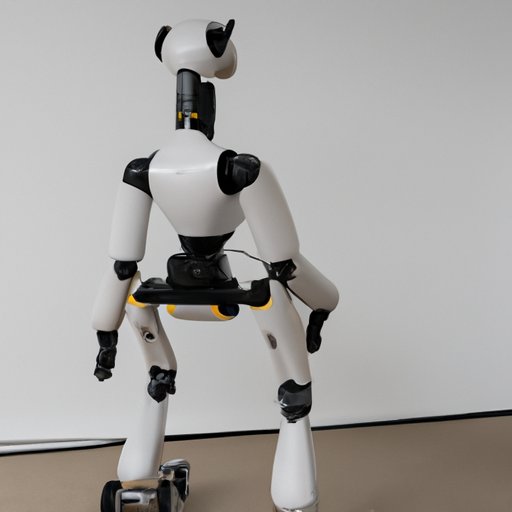Introduction
Boston Dynamics is a robotics company that has been developing robots for a variety of applications. One of their most well-known robots is the Atlas Robot, which is a bipedal humanoid robot designed for a variety of tasks. This article will explore the history, purpose, features, and future of the Atlas Robot in order to better understand its capabilities and implications for future use.
History of Boston Dynamics and the Atlas Robot
Boston Dynamics was founded in 1992 by Marc Raibert, a former professor at Carnegie Mellon University. The company has since become one of the leading robotics companies in the world, developing robots for both military and commercial purposes. The Atlas Robot was first unveiled in 2013 as part of the DARPA Robotics Challenge, with the goal of creating a robot capable of performing complex tasks in a variety of environments.
The Atlas Robot was developed over several years, with improvements made to its hardware and software components. In 2016, the robot was upgraded with new sensors, computer vision, and mobility capabilities. These upgrades allowed the robot to move around more easily and interact with its environment in a more natural way.
What is the Purpose of the Atlas Robot?
The primary purpose of the Atlas Robot is to perform tasks in hazardous environments. For example, the robot could be used in disaster relief or search and rescue operations, where it would be able to navigate difficult terrain and respond quickly to dangerous situations. The robot could also be used in industrial settings, such as factories, warehouses, and construction sites, where it could help with mundane tasks such as lifting and carrying objects.
In addition to its primary purpose, the Atlas Robot can also be used for research and development. Scientists and engineers can use the robot to test new technologies and develop new applications for robotics. The robot can also be used in entertainment, such as in movie production and live events.
Features of the Atlas Robot
The Atlas Robot is equipped with a range of features that enable it to perform its tasks. The robot is mobile, meaning it can move around on two legs and traverse uneven terrain. It is also equipped with a range of sensors, including cameras, lasers, and infrared systems, which allow it to detect its environment and identify objects. The robot also has computer vision, which allows it to recognize objects and react accordingly.
How Does the Atlas Robot Work?
The Atlas Robot is powered by a combination of software and hardware components. The robot’s software includes algorithms that allow it to process data from its sensors and make decisions about how to move and interact with its environment. The robot’s hardware includes actuators, which are responsible for controlling the robot’s movements and providing force feedback. The robot is also programmed with specific tasks that it must complete in order to perform its duties.

Benefits of Using the Atlas Robot
There are a number of potential benefits to using the Atlas Robot. First, the robot can increase efficiency by automating certain tasks that would otherwise require human labor. This can reduce costs and improve safety, as robots are less likely to make mistakes than humans. Additionally, the robot can be used in hazardous environments, such as nuclear power plants or chemical factories, where human workers cannot safely operate.
The Atlas Robot can also provide valuable data for research and development. By measuring the robot’s performance in various environments, scientists and engineers can gain insights into how robots can be used in different applications. This data can be used to improve existing robots and develop new ones.

The Future of the Atlas Robot
The Atlas Robot is still in its early stages, but the technology is rapidly advancing. In the future, the robot could become more autonomous, with the ability to make decisions on its own without the need for programming. It could also become more humanoid, with the ability to interact with humans in a more natural way.
“We envision a world where robots are able to work alongside people, helping to make our lives easier and safer,” said Marc Raibert, founder of Boston Dynamics. “The Atlas Robot is an important step in this direction, and we believe it has tremendous potential for a variety of applications.”

Challenges Facing the Atlas Robot
Despite the potential benefits of using the Atlas Robot, there are some challenges that need to be addressed. The cost of the technology is still relatively high, making it difficult for smaller companies to invest in the robot. There are also regulatory issues to consider, as governments may impose restrictions on the use of robots in certain industries. Finally, there is the issue of public perception, as some people may view robots as a threat to jobs or even a potential danger to society.
Conclusion
The Boston Dynamics Atlas Robot has the potential to revolutionize the way we work and interact with our environment. Its features, such as mobility, sensors, and computer vision, make it ideal for a variety of tasks, from search and rescue to industrial automation. While there are some challenges that need to be addressed, such as cost and regulatory issues, the future of the Atlas Robot looks bright. With continued advances in technology, the robot could soon become a useful tool for a variety of applications.
(Note: Is this article not meeting your expectations? Do you have knowledge or insights to share? Unlock new opportunities and expand your reach by joining our authors team. Click Registration to join us and share your expertise with our readers.)
